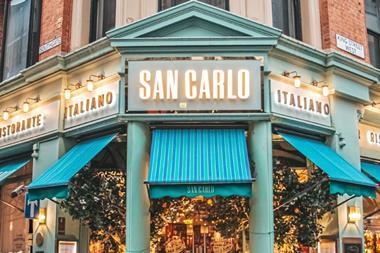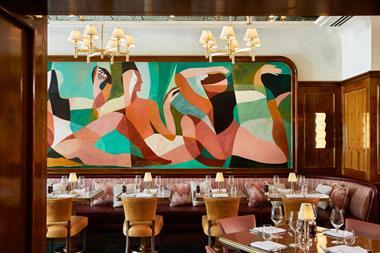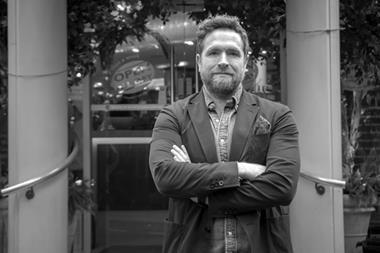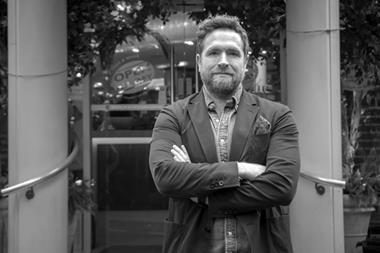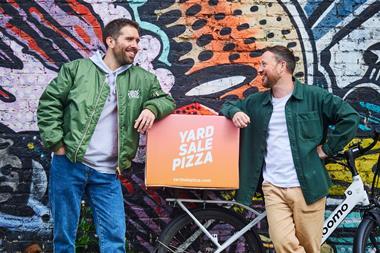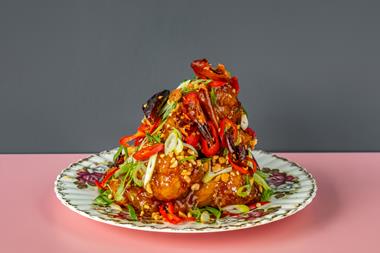San Carlo Group’s impeccably turned out MD has the premium casual Italian space all sewn up on these shores, and increasingly oversees too
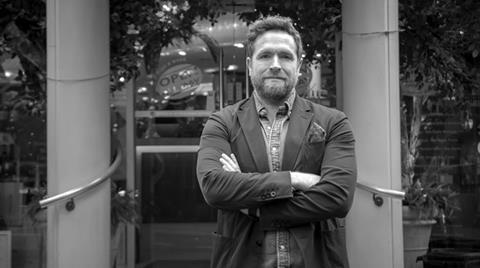
It’s easy to see why Marcello Distefano chooses his San Carlo Group’s Manchester flagship as the location for our interview. The family business has this particular corner of the city wrapped up with the restaurant looking out onto the group’s small plates-focused Cicchetti site as well as another that isn’t open to the public (it’s currently being used as a development kitchen) that’s plastered with marketing for the premium casual Italian group’s numerous other restaurants in the UK and further afield.
“We took the site in 2017 mainly to block a rival operator from opening there,” the group’s sharply-dressed managing director says matter-of-factly.
It seems to have worked. Both San Carlo and Cicchetti are doing a roaring trade on a drizzly Friday lunchtime and the group’s other places would appear to be having a good time of it too. Including franchise revenue from its burgeoning overseas business, turnover for the year ending September 2022 was £70m, up 18% on its (pre-pandemic) 2019 figures. Revenues in the first quarter of its 2023 accounts (October to December) are also up, this time by 20% on the same period year-on-year driven by a record-breaking Christmas period.
Birmingham born
San Carlo was founded by Distefano’s father Carlo in Birmingham in 1992 with further San Carlo restaurants following in Bristol and Leicester.
In 2005, it moved into Manchester, which proved to be a defining moment for the group. Across the road from the city’s shiny new House of Fraser department store, the restaurant was a smash hit, paving the way for equally prominent sites in Leeds and Liverpool.
“It was a large restaurant all on one level. The atmosphere was electric. It was popular with celebrities; Tom Jones came in for dinner within the first week. Everybody wanted a piece of San Carlo,” recalls Distefano, who joined the family business as the Manchester site launched having recently graduated from a business administration degree.
“All my friends were trying to get on grad programmes. I did a few interviews and realised it wasn’t for me. My father initially tried to put me off a career in restaurants. He said it was a hard life.”
Another pivotal moment for the group would come in 2011 when it opened its first restaurant that wasn’t a San Carlo. Located within House of Fraser, Cicchetti Manchester was among the first restaurants to bring small plates and counter dining to the north and proved a major hit for the group.
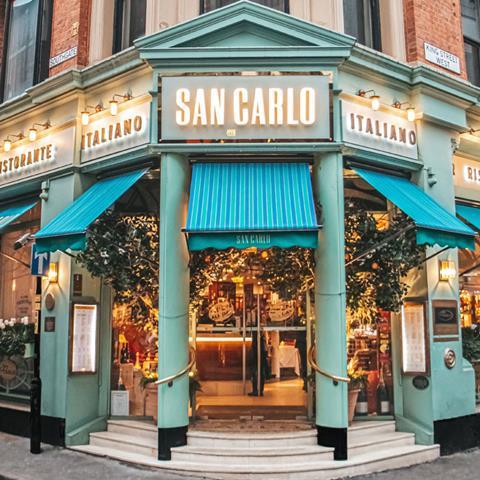
A year or so later, the Distefanos brought Cicchetti to London, its huge success kickstarting a wave of expansion in the capital.
Today, San Carlo Group is one of the biggest family-owned and run UK-based restaurant groups. It operates 31 locations and counting across a number of key brands that also include the more trad Italian-feeling Signor Sassi; and Italian islands inspired Isola; and Fumo, which has more of an international vibe and is more late night-orientated.
Organic growth
Unusually for a business that has achieved such scale, San Carlo’s growth has essentially been organic alongside being ‘well supported’ by NatWest.
“We’re not highly leveraged. We are a family business, albeit quite a large one now. Sometimes we forget how big we are,” Distefano says.
The scale of its growth can also be attributed to its savvy multi-brand approach that has allowed it to target slightly different demographics but also open restaurants in relatively close proximity to one another. Despite the different branding, all are pitched at the same level and price point, and have a similar high-end design aesthetic.
“They are all as premium as each other,” explains Distefano. “The quality and product are the same across the group. It’s just presented in different ways.”
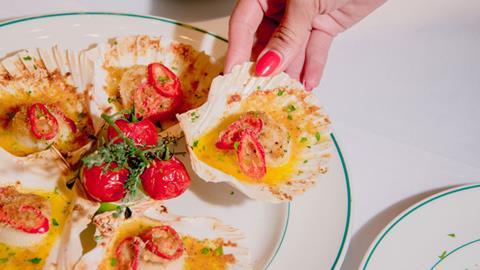
In London, it operates eight restaurants - San Carlo, Alto by San Carlo, three Cichettis, Isola by San Carlo, Signor Sassi, and Fumo - more than it does anywhere else in the UK.
“There was at one point a lot of snobbery from southern brands about Northern operators heading south,” he adds. “But we have now made our mark – there are lots of Northern brands that have done well in the south.”
International expansion
Key to the company’s success has also been its overseas ambitions, with the business quicker than many to spot the potential for expansion beyond these shores.
The first international San Carlo site launched in Kuwait in 2011 by way of a franchise deal with the Americana Group, which owns the Middle Eastern franchise rights to a number of major QSR and casual dining brands including KFC, Pizza Hut and TGI Fridays. While it didn’t go particularly well, it paved the way for a string of far more successful franchise projects across the Middle East and beyond.
“Americana were great to work with and good at what they do but the people who were charged with running the restaurant (a Signor Sassi) didn’t understand what was required to run a premium restaurant. We opened a second restaurant with them in Beirut but that proved a challenge too due to political instability.”
Both the restaurants are now closed, but San Carlo has learnt from its missteps and now has a total of six franchises in the Middle East as well as a franchise in Bangkok. “It’s been a big learning process, but we understand that world much better now. The key thing for us now is that we need operators with a good track record of operating brands that are comparable to our own.”
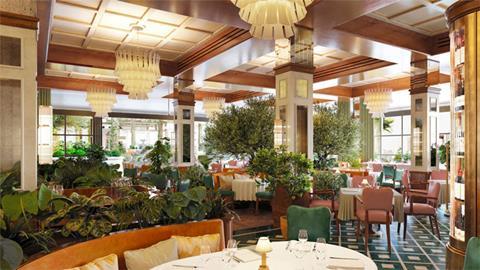
2023 will be a big year for the group in terms of international sites. Next month will see San Carlo make its debut in Dubai following a franchise deal with Sunset Hospitality Group, which operates some of the city’s most successful restaurants including SushiSamba and Mott 32.
“The aim is for Signor Sassi Dubai to be the best Italian restaurant in the city. They’re going for it. It’s going to be a big site within Regis at the Palm with two bars and a full-on Italian terrace with a huge fountain.”
San Carlo’s fourth franchise in Saudi Arabia is set to launch around the same time. San Carlo was among the first international groups to gain a foothold in the country’s capital Riyadh and has been extremely successful there.
“The market in Saudi has exploded since the country started opening up, and there’s a lot more to come. Places are packed out every night. It’s a very different market to Dubai as it’s nearly all locals. But the plan is to attract more international visitors, which is an exciting prospect for us.”
This year will also see the launch of San Carlo’s first project stateside. In Miami, the site – a Cicchetti - is not company-owned but is not a franchise either, with the group partnering with a real estate company and set to run the site itself under a management contract.
“It’s a big deal for us. I’d love to do more in the US but I’m aware that it’s a very different market. But if we get it right more will follow. It does feel odd that a brand that started out in Birmingham is now expanding across the world.”
An eye on Europe
San Carlo also has international ambitions closer to home. Distefano is eyeing a rollout of company-owned sites in Germany, and the manner in which he speaks about suggests it’s much more than a pipedream.
“In many ways it’s the closest country to the UK in terms of restaurant culture,” he says. “But they are behind the curve when it comes to branded restaurants. Italian food is very popular there, but a lot of the restaurants are quite average and very traditional in their approach. Germans are coming to London and thinking ‘why don’t we have restaurant brands like this?’”
San Carlo’s first site in Germany could open as early as 2025, with Berlin, Düsseldorf and Hamburg mooted as the most likely locations.
Earlier this month, Distefano acquired Gino D’Acampo’s Luciano site in the affluent Cheshire village of Alderley Edge and will soon reopen it under the San Carlo brand. The group has yet to confirm any further UK restaurant launches for 2023, but it’s a safe bet San Carlo will open at least one more site on these shores before the year is out with Distefano actively looking for opportunities around the country.
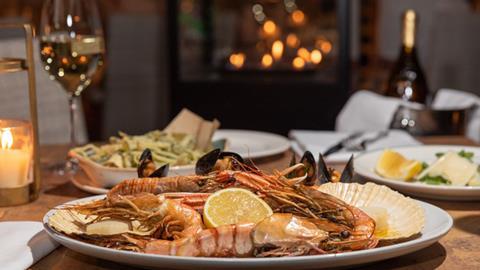
Top of his wish list is a new home for Cicchetti Piccadilly. The group’s debut London restaurant launched in 2012 in a site close to Piccadilly Circus that the Crown Estate had earmarked for redevelopment. That day has now come, or at least nearly come, with Distefano looking at nearby sites to relocate to in a bid to secure the legacy of one of the group’s most popular and prominent London locations.
He also came within a hair’s breadth of making the group’s debut north of the border last year with a site in Edinburgh but pulled the plug due to staffing concerns. “It’s so far away. We thought it might be too much of a headache. We can’t move people around like we do in the north and in London.”
The group is also in the process of its biggest-ever refurbishment project. Likely with one eye on recent arrivals Gaucho and Hawksmoor, it is investing £3.5m into San Carlo Liverpool.
“A lot is happening in Liverpool. The restaurant launched in 2010 so it was getting a bit tired. We’re ripping it all out and starting again. It’s a big number but we spent £2m on the original fit out all those years so it’s one that makes sense.” The Castle Street restaurant is expected to relaunch this spring.
Running out of people
Staffing worries might have put the kibosh on opening a San Carlo restaurant north of the border but things are now stabilising. “It’s not nearly as bad as it was last year. But it’s still a big issue, we’re still using a lot of agency staff in London,” says Distefano.
“The Government keeps talking about retraining people, but with unemployment at an all-time low and over one million vacancies (across all sectors) then we must assume that a lot of the people that aren’t working are unemployable. The Government wants growth but they’re not giving us the people we need to achieve it. We’d do so much more if we could get more people from mainland Europe.”
Other things keeping him up at night include food price inflation, utility costs and the corresponding rise in the cost of eating out, but he’s keen not to come across as yet another negative industry voice.
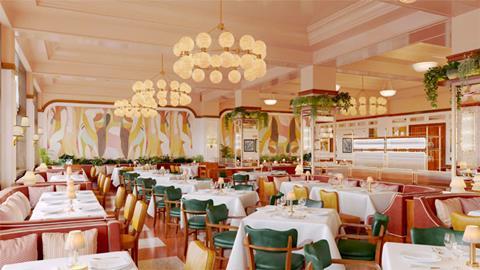
“There’s a narrative that everything is rubbish, and the restaurant industry is broken. Sometimes I feel like we need to be a bit more positive about things. Things are tough but plenty of people are successful. That said, there are some good operators out there that have seen things go against them. That is sad.”
Keeping up appearances
The current trading landscape has necessitated a partial rethink of San Carlo’s brand positioning. Post-pandemic, the group has invested more in its launches and refits than it ever has before in a bid to reaffirm its premium credentials (its big budget overhaul of Liverpool and its most recent London restaurant Isola being cases in point).
“The lower end of the Italian market is extremely tough. The upper end of the market is a much safer place to be,” Distefano says. “To continue to appeal to the demographic we must raise our game. This is especially important outside London. People have copied us. They look like us, which means we need to reinvent ourselves.”
San Carlo is now working with new design agencies to create more vibrant, upmarket and Instagram-friendly looking spaces which draw on 1960s Italian design – think White Lotus season 2 – and use premium materials that are often from Italy.
“If we are to be a luxury brand, we need to reflect that in everything we do. As a family business we need to stay relevant. The plan for most restaurant brands is to scale and then sell. I would not rule out selling off a brand at some point, but we will never sell the business. I like the idea of my kids and my sibling’s kids taking it on.”

























